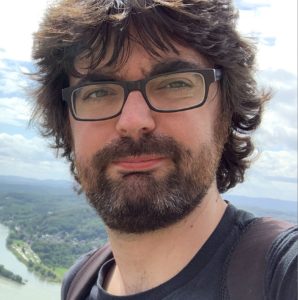Andrea Scotti obtained his PhD in 2015 from ETH Zürich (Switzerland) performing his research between the Paul Scherrer Institute (PSI) and the Georgia Institute of Technology (GaTech, USA). His PhD thesis was awarded with the Young Scientist Prize of the Swiss Neutron Scattering Society. After a first postdoc at Lund University, he moved to Aachen where in 2017 he started his Alexander Von Humboldt fellowship. Since 2019, he has been a Junior Group Leader at the Institute of Physical Chemistry at the RWTH Aachen university. The main subject of his research is experimental soft matter, with particular focus on the relationship between microscopic architecture of soft building blocks, e.g. microgels, and the macroscopic response of a soft material, both in three and two dimensions. The experimental tools he uses include scattering (neutron, X-ray and light), reflectometry, rheology, computer simulations, interfacial techniques (Langmuir-Blodgett trough) and microscopy techniques (confocal, atomic force).
Read Andrea’s Emerging Investigator article “Experimental determination of the bulk moduli of hollow nanogels“
1. How do you feel about Soft Matter as a place to publish research on this topic?
For interdisciplinary studies between the fields of physics, chemistry, and biology, I have found Soft Matter to be one of the best journals in which to disseminate our results, as well as to see what is new in the field of colloidal science.
2. What aspect of your work are you most excited about at the moment and what do you find most challenging about your research?
My main interest lies in understanding the ordering of soft material under flow, specifically what is the role of the softness of the individual particles or macromolecules on the overall macroscopic properties of the material. Now we are able to produce soft particles, in particular micro- and nanogels, with different internal structures and shapes. The main challenge is to isolate what are the key characteristics of a particle (e.g. elastic moduli, architecture, shape) that have the dominant effect on the flow and equilibrium phase behaviour of the solutions.
3. In your opinion, what are the most important questions to be asked/answered in this field of research?
One of the main questions is how we can define the idea of softness in a quantitative and rigorous way. This is fundamental to describe its effects on a material’s properties, but also to build bridges between different fields. For instance, is the softness that plays a role in the flow properties of a solution of nanogels the same that affects the flow of blood cells? How soft are viruses compared to other synthetic soft colloids? Answering these questions will allow us to understand the fundamental laws governing different systems. This can pave the way to both a better understanding of soft and condensed matter, but also to the development of synthetic materials that can better mimic biologically-relevant compounds.
4. Can you share one piece of career-related advice or wisdom with other early career scientists?
You should always look for discussions with your colleagues and other researchers. Some of my best work has been the result of spontaneous conversations at conferences, seminars and workshops, which have seeded fruitful long-lasting international collaborations.











